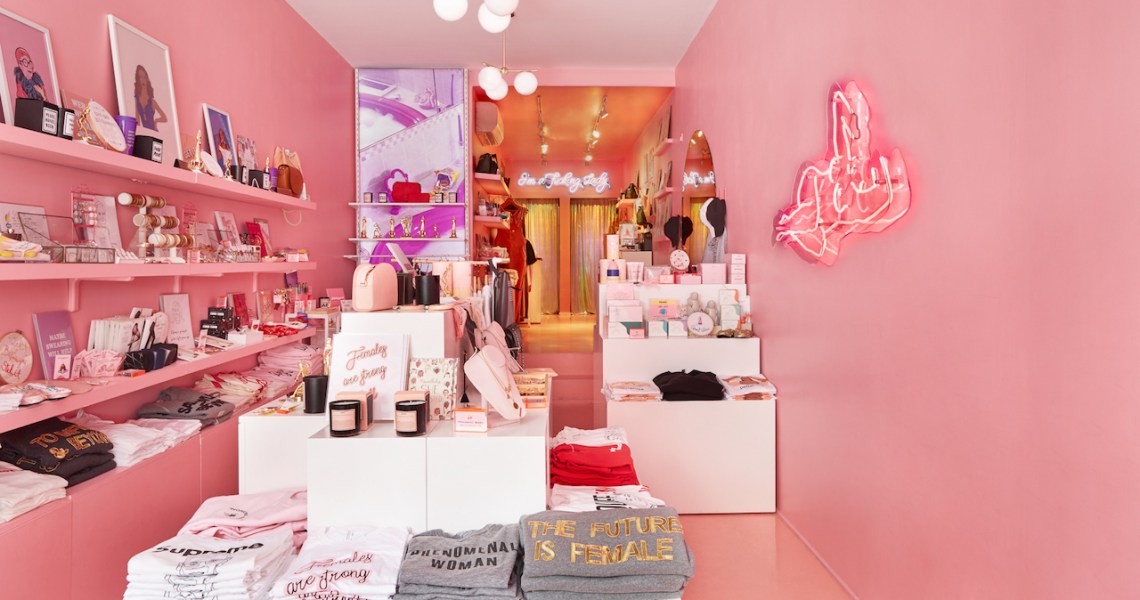In the last few months, fashion brands have jumped into Instagram Shopping, from high-end Prada and Balmain to direct-to-consumer Outdoor Voices and Uniqlo. All the aforementioned brands have been on-boarded to test Instagram’s Checkout feature, where customers can buy a product directly through the app, while many others are simply creating Instagram storefronts that link out to their own websites.
While buzz has picked up around in-app Checkout since it launched in March 2019, there are companies that have no plans to use the features — at least, not anytime soon.
Bulletin has for years had an Instagram shop: A tab on the company’s Instagram account takes users to a digital storefront in the app. That was before Bulletin transitioned its business model from a consumer-facing retailer carrying a lot of DTC brands to a B2B wholesale marketplace. Bulletin still has a physical store in New York City, but the bulk of its business is now focused on helping small, independent brands find retail partners, and vice versa. While Bulletin still has a shopping tab visible on its Instagram account, the items aren’t available to purchase for consumers or followers. When a customer clicks on the product, they receive an “item not found” message on the Bulletin website.
“We did link out when we had more of a consumer presence, but we stopped when we shifted the business model,” said Maggie Braine, vp of merchandising and brand experience for Bulletin. “It would be awesome if you could do that in a wholesale capacity. We have a lot of ideas about how it could be of service for wholesalers, but [Instagram Shopping] is not quite ready to be a B2B service.”
A marketplace-style retailer speaking off the record said they won’t be using Instagram’s in-app Checkout because that would make Instagram a competing marketplace.
In addition, pure-play DTC brands, or those with zero wholesale partnerships, may be hesitant to go all in on Instagram’s shopping features, said Liz Gottbrecht, vp of marketing at influencer platform Mavrck.
“For DTC brands, the cost of customer acquisition is so much higher, and where they have an up on everyone is the wealth of customer data and personalization they own through their own site,” said Gottbrecht. “That’s what they lose when they opt into a retail partnership or arrangement like this. They lose [owning] the quality of the experience as well as the full data of that experience.”
Ad position: web_incontent_pos1
Direct-to-consumer maternity clothing company Storq has a shoppable tab (not Checkout-enabled, but rather it takes customers to the Storq website to make a purchase) on its page, but CEO Courtney Klein said she hasn’t noticed any new data coming in through Instagram beyond what the platform has been offering business accounts, namely website clicks, profile visits, audience metrics, reach and impressions. She said the company didn’t even realize it had access to Instagram Shopping until a little shopping bag popped up on the brand’s account one day.
“We use Shopify, so it’s just so easy for all of these things [like Shopping] to work seamlessly for us. Facebook and Instagram already have access to our catalog [through Shopify], so it’s just really easy,” said Klein. Shopify customers that already have a a Facebook Business page with a Facebook catalog of products set up can use Shopify to upload their products to an Instagram sales channel.
It’s unclear how Instagram decides which retailers and brands get access to shopping features. Klein said she didn’t mind the feature automatically turning on, considering that most of Storq customers discover the brand on Instagram and shop it on mobile. Seventy-four percent of the company’s website traffic is currently coming from mobile.




